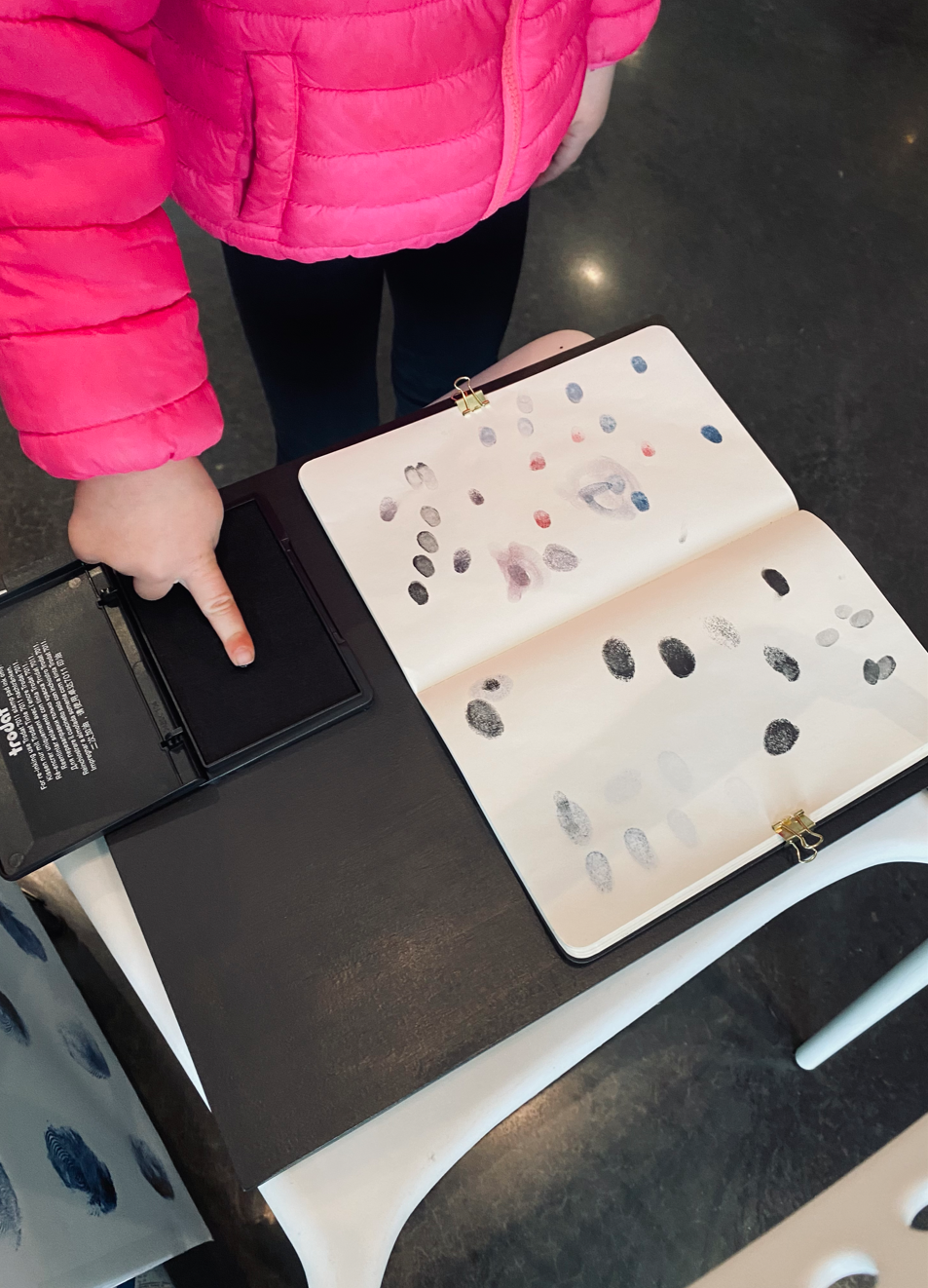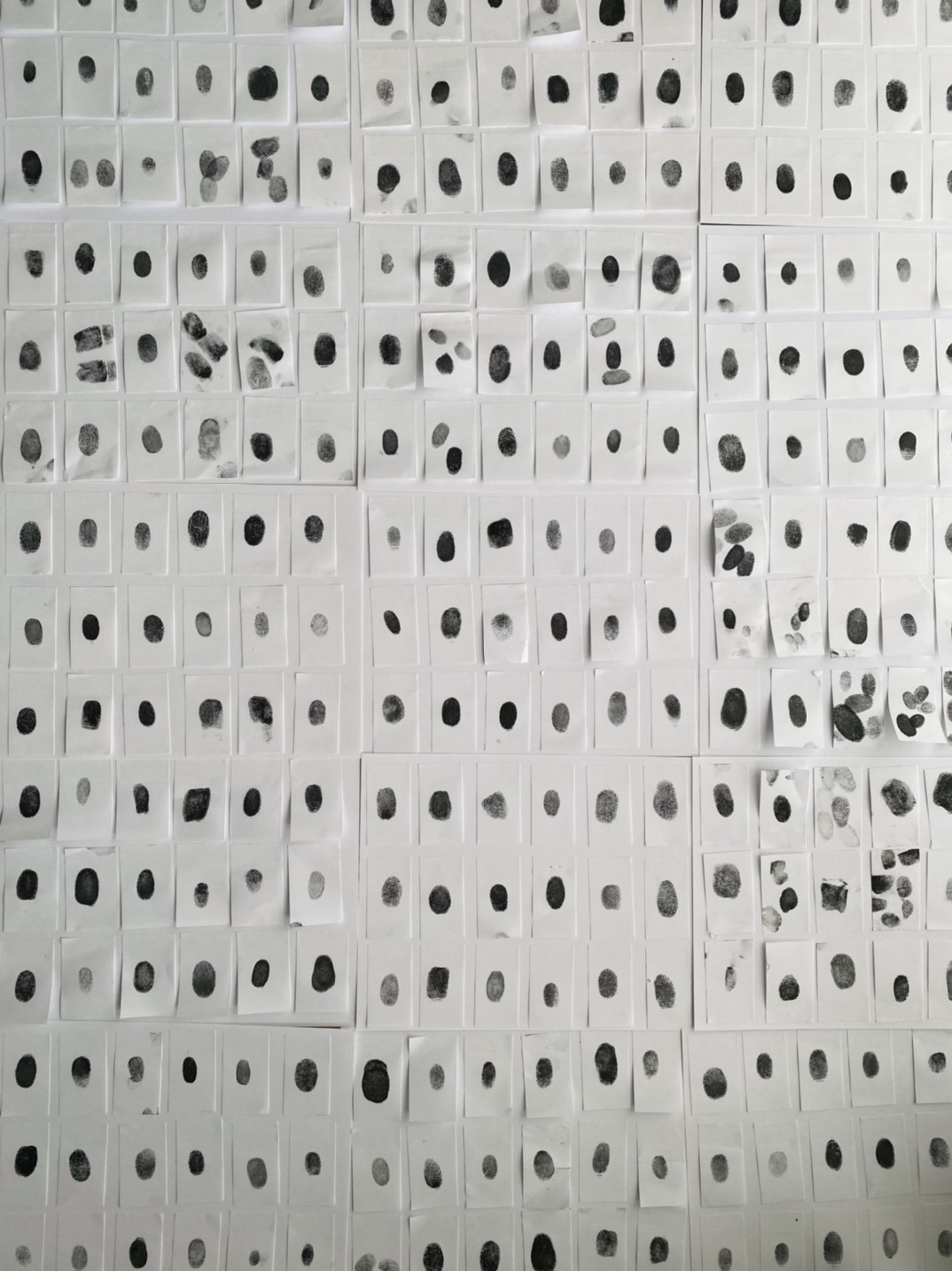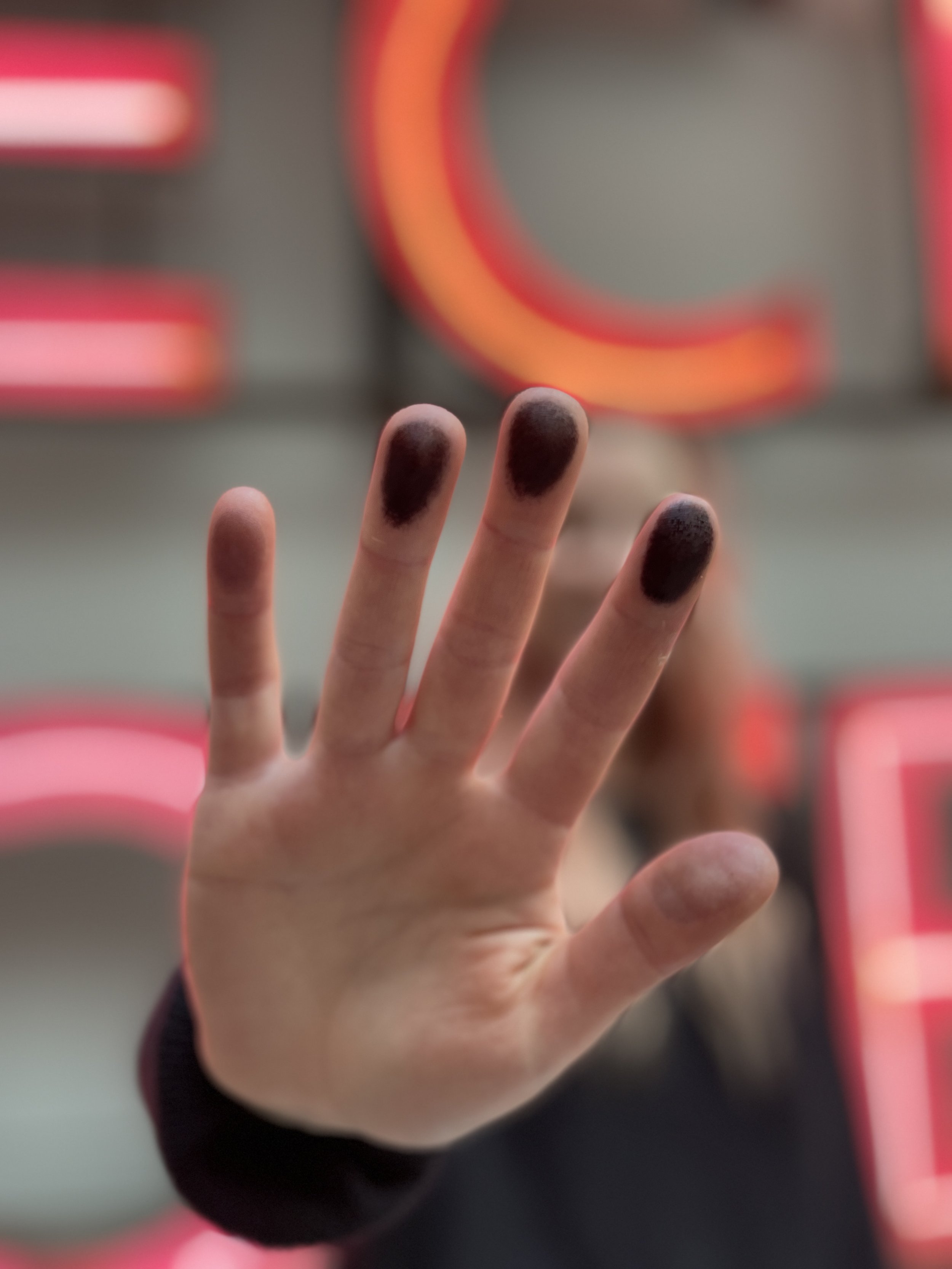Touch Traces by Cassie Suche
Putting her own creative touch on East Village, local Calgary artist Cassie Suche created Touch Traces¸ a public art installation that can be found on bridge abutments and other surfaces along RiverWalk. Unveiled earlier this summer, Cassie’s work is comprised of hundreds of fingerprints collected from our very own neighbourhood.
“Fingerprints are an intimate reference to touch. They symbolize one of the ways that we connect with others, and with our surroundings. They have a beautiful duality of being so universal, and also notably unique. They’re inextricably tied to our personal identities, and while we leave them behind almost everywhere we go, they’re also very private.”
-Cassie Suche, Artist
The artwork was created using more than 640 fingerprints sourced from the East Village community, which Cassie collected throughout the spring of 2022 through various pop-ups in the neighborhood. People who live, work, and play in East Village had the opportunity to make an imprint (literally) by contributing their one-of-a-kind prints that were layered and distorted to create these contemporary and abstract images that speak to our individuality within a community and our tactile connection to others and our surroundings.
We got the inside scoop from Cassie as she shared the inspiration, process and meaning behind her work.
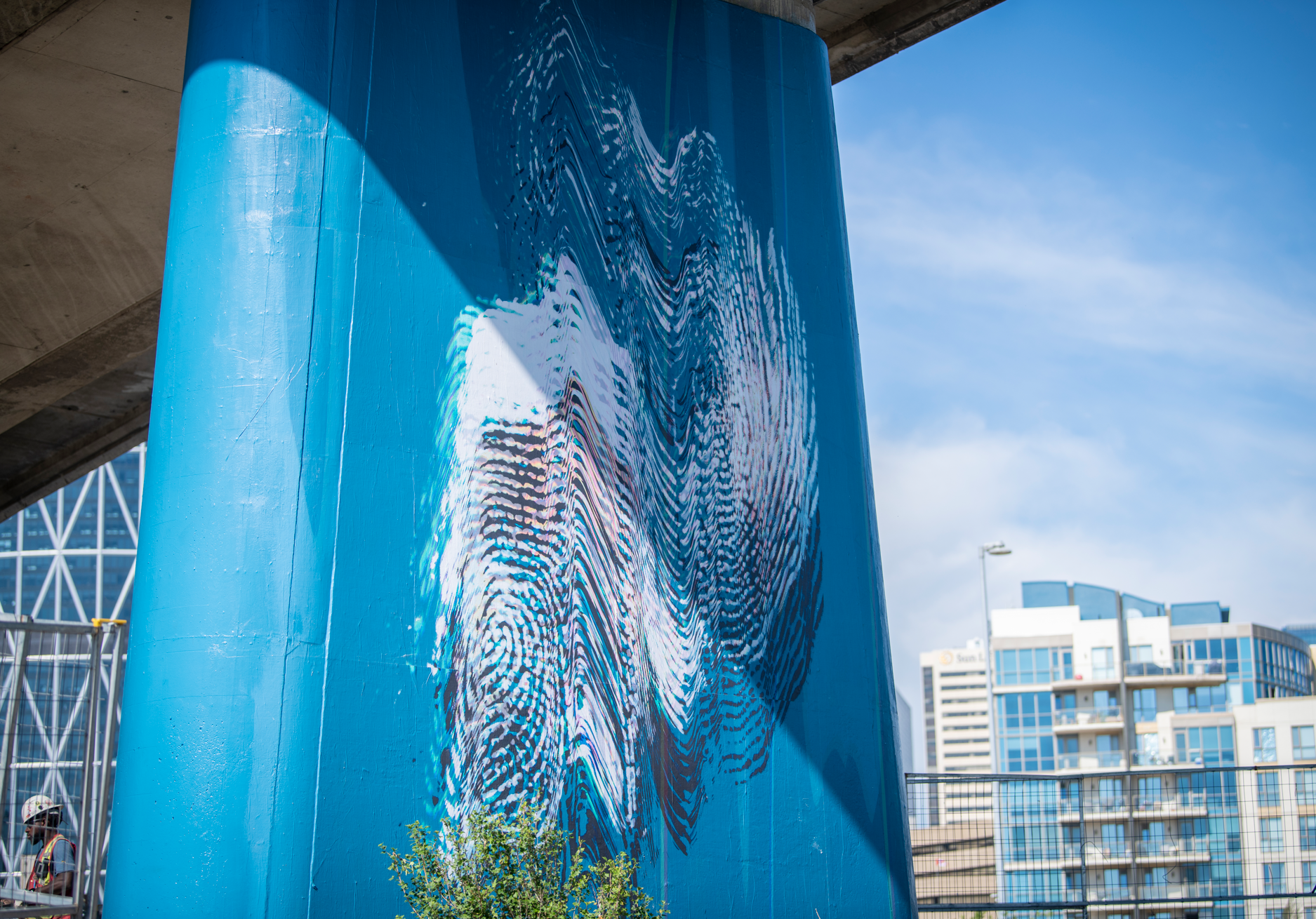
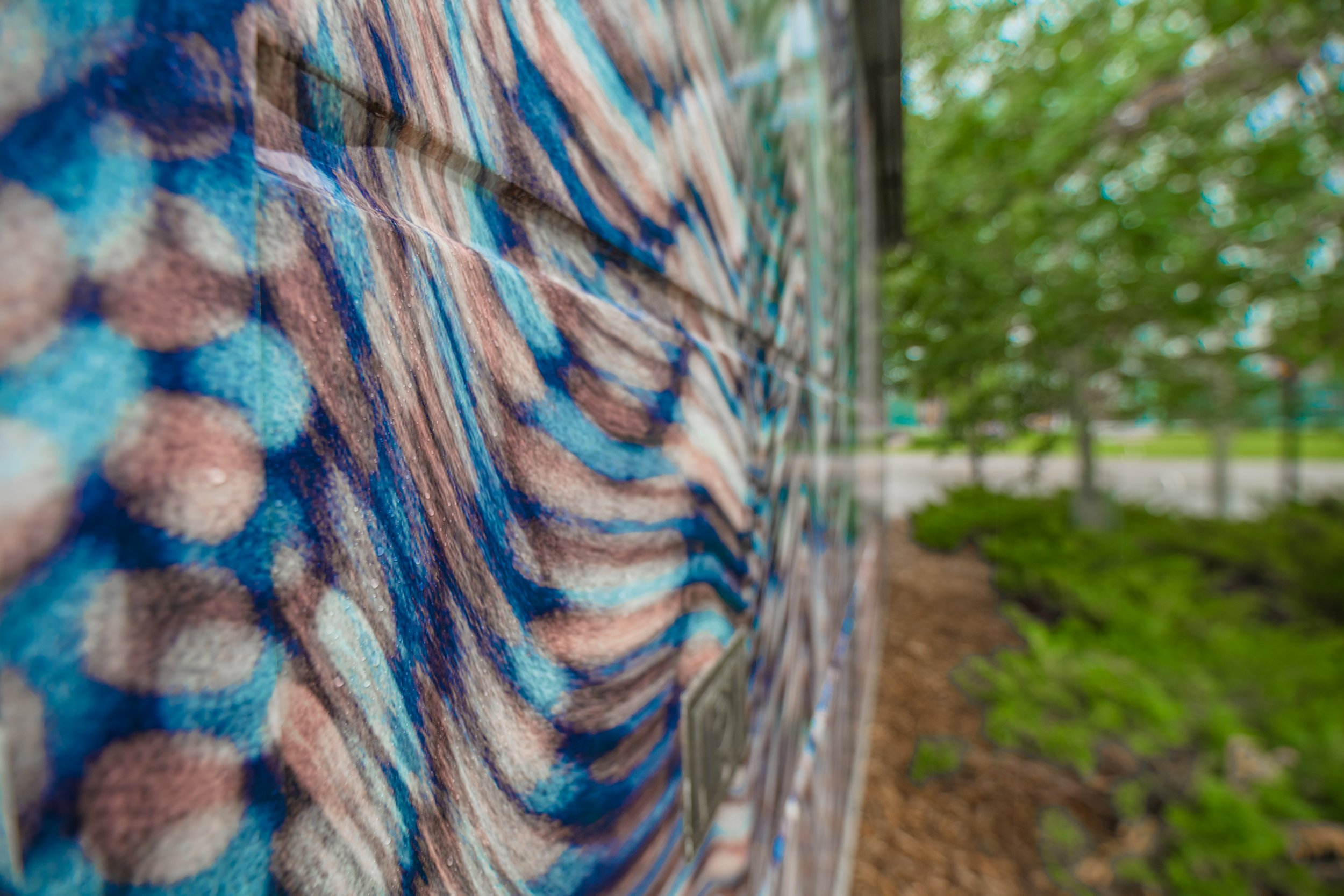
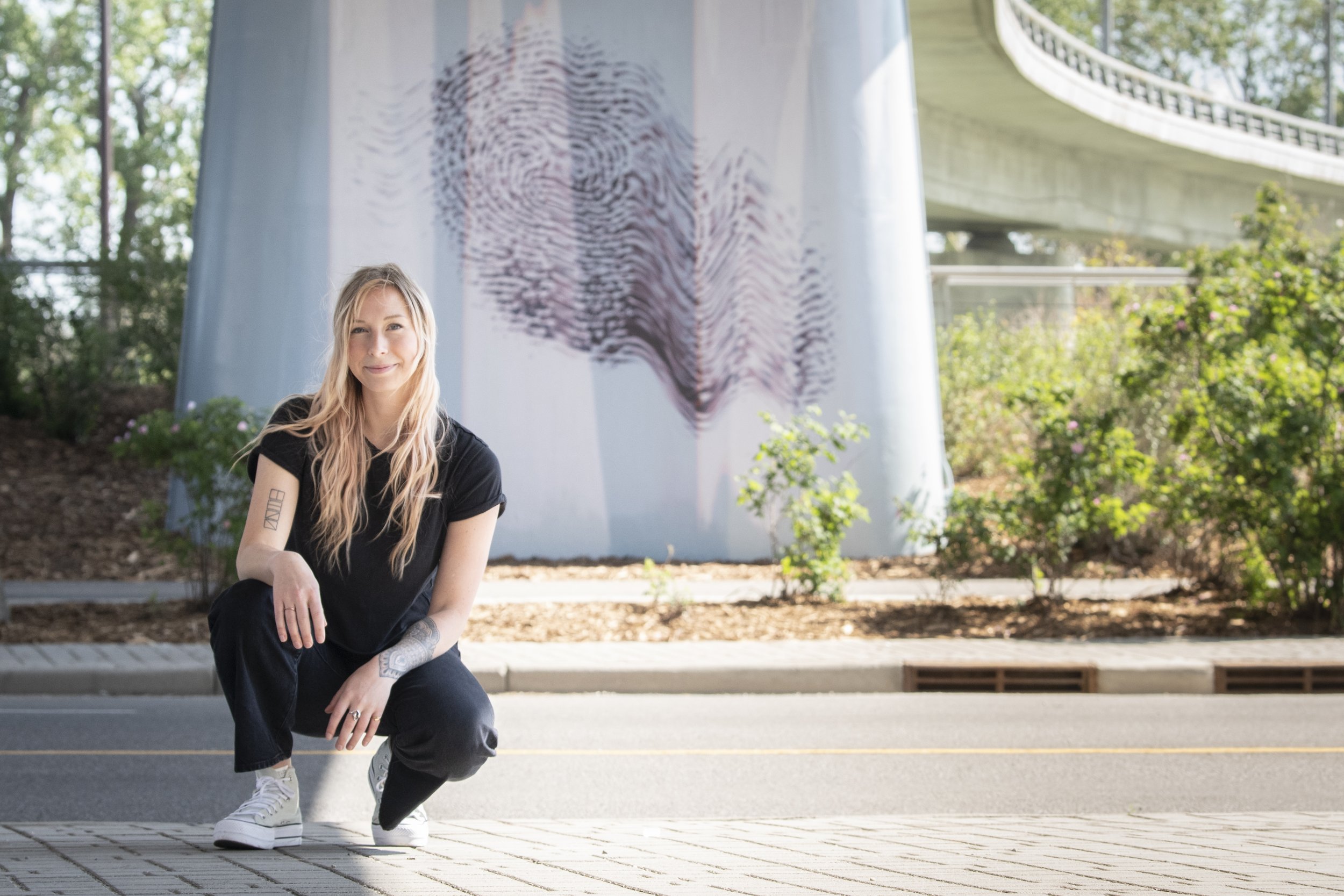
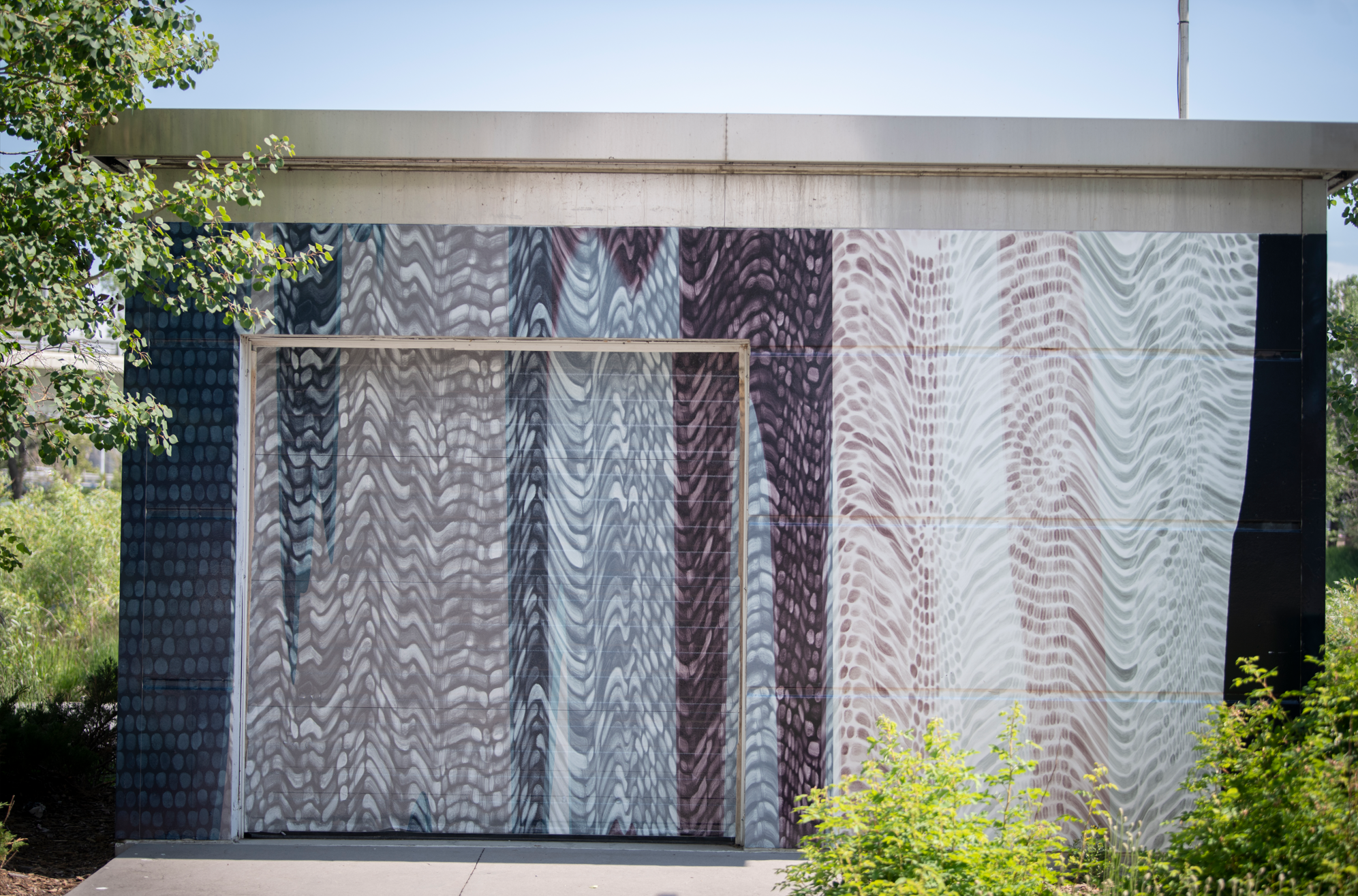
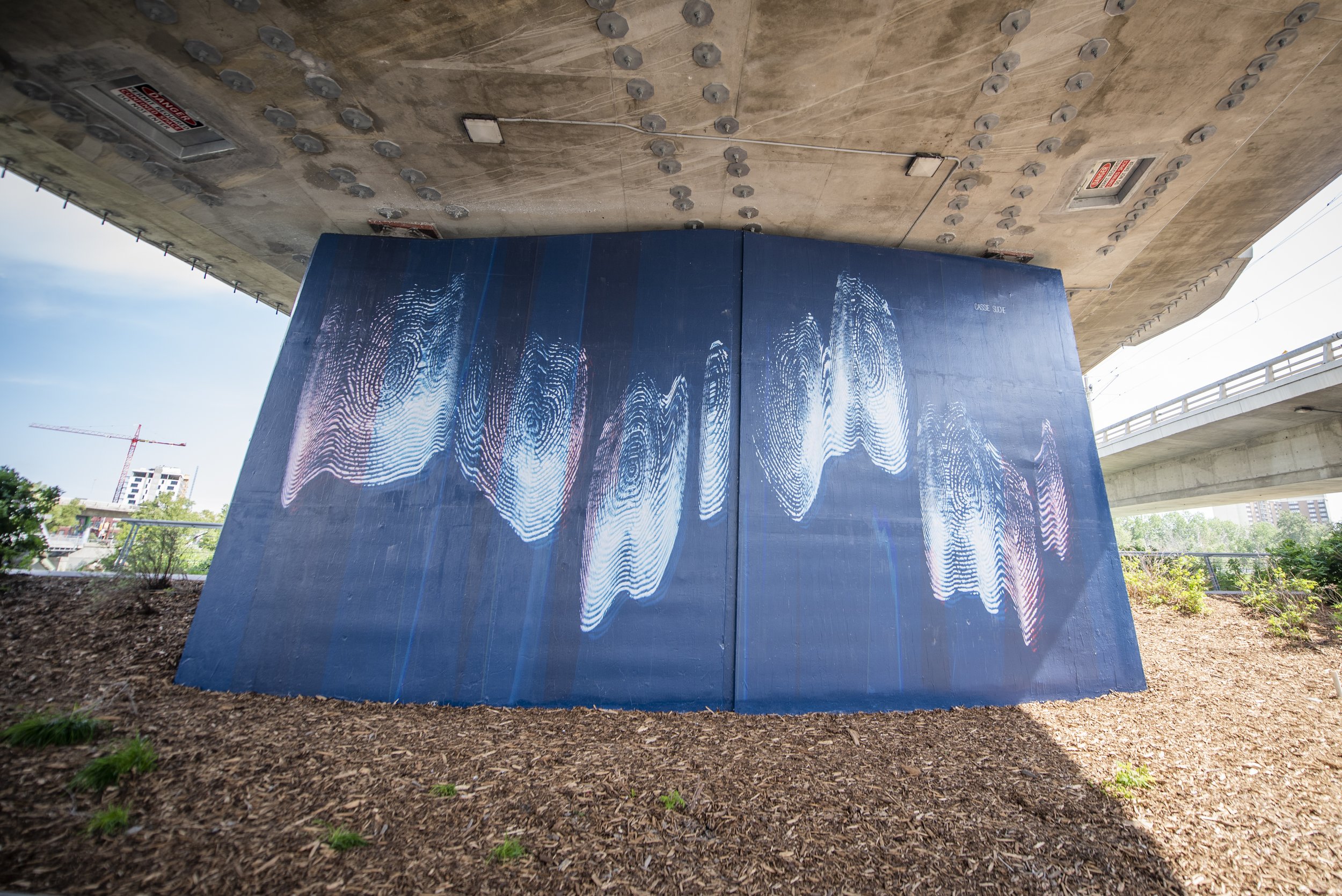

What do fingerprints represent in the piece?
We’ve spent the past couple of years with a heightened awareness over what and who we touch, and this project felt like an opportunity to reframe that notion.
Fingerprints have this duality of being so commonplace, but also really intimate and personal. They’re so universal, but also entirely unique, linked inextricably to our individual identities. We leave our fingerprints everywhere we go, overlapping with those of strangers and friends, connecting with one another unknowingly. I love the notion of individuality within community that this concept references.
Where did the concept come from?
As I was coming up with the concept for Touch Traces, I was playing around with all kinds of ideas. When I experimented with distorting an image of my own fingerprint, something about the imagery really grabbed me.
Aesthetic is often a major connection point to my work. It’s not just about beauty, it’s about how an image is processed by a viewer on a fundamental level. I’m interested in that baseline reaction between image and brain. Where does the image capture attention, how does it move the eye, and where (and if) it allows the eye to rest.
Why did you choose to incorporate public engagement into your concept?
One thing that makes a piece of public art successful is authentic collaboration between the artist and the community. I’ve spent the last couple of years working to better understand community engagement and searching for ways that it can work harmoniously with my practice.
I have found it to be a really interesting challenge to build space for participation in a project that is direct and meaningful while maintaining a reasonable level of artistic control. I think this challenge is amplified as an abstract artist.
My views on public engagement have really evolved over the past few years. When I began creating public art, I really wasn’t sure what engagement was for or why it was important. I’ve been so lucky to spend time around other artists and arts facilitators throughout projects and at residencies, and I’ve come around very quickly to the significance and the potential of public engagement. Through Touch Traces, public engagement was also accessible and universal. I feel proud of this project as a step toward more and more authentic engagement in my public art practice.
Can you share more about the material selection and process behind Touch Traces?
Material and process are at the heart of my work, and so the conception of this project really began with thinking about the material.
The ten surfaces included in the site are subject to a high degree of human intervention and elemental exposure. I decided to work with printed vinyl because of its durability, but I was also interested in using printed material because I saw a lot of creative potential in that process.
Digital print as a medium offers a really unique opportunity to create work that features digital techniques. It’s an opportunity to create imagery that cannot be painted or drawn.
The concept capitalizes on the printed medium of the installation by featuring a digital methodology in the work. You were able to blend digital art with organic mediums. Can you share the innovation behind your process and why that’s important/unique to your aesthetic and this work specifically?
I decided on the digital technique I wanted to use before I knew how I wanted to include the community in this project. The technique involves manipulating images on a flatbed scanner, distorting them into linear imagery.
Through the process of manipulating the prints on a scanner, it generates linear, flowing artwork which mirrors the adjacent river.
I tend to think about my art production in systems, and so the way I thought about this process was to bring in the community as a variable in the system. I would ask the community to contribute something that I could use to transform into artwork using this technique.
I played with a lot of ideas that I really liked, but none spoke to me until I tested out a printed version of my own fingerprint.
Touch Traces is the fifth public art installation on RiverWalk and is part of our Art in the Public Realm program. CMLC released a RFP in December 2021 and following a volunteer, community-led juried process, Cassie was awarded the contract. The jury included representatives from the East Village Neighbourhood Association, the local arts community, and local business owners.
We’re massive fans of public art, which is probably why the neighbourhood has transformed into a giant outdoor gallery. Instead of paying admission at an indoor museum, just take a stroll through East Village to take in art big and small, 2D or 3D, digital or sculpted, international travelling pieces or unique local installations.


